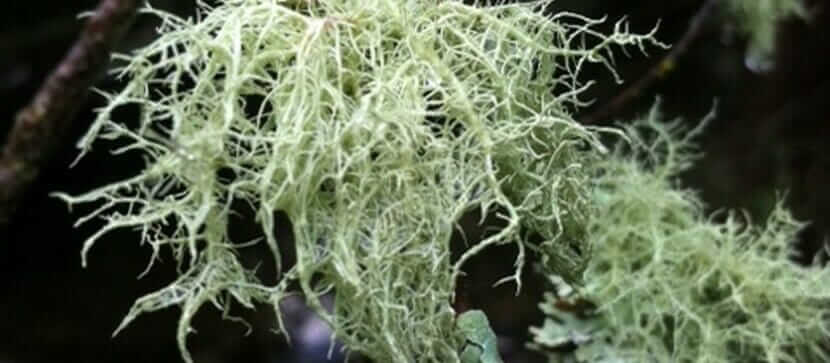More than 1000 different kinds of lichen grow in the Pacific Northwest. Of these, a few hundred are widespread.One that stands out at Chinook this time of year is Usnea (Usena wirthii and longissima). We see it on our apple trees, the large madrone by the Farmhouse, and throughout the forest, especially on Douglas fir, alder and gemlock branches.
Lichens are a physical manifestation of the symbiotic relationship between a fungus and an algae. The fungi cultivate algae within themselves. Since algae can photosynthesize, it can supply the fungi with carbohydrates, vitamins, and proteins. In return, the fungi provides the algae with protection from the elements.
Usnea is a medium-sized, tufted to somewhat hanging shrub lichen, 2-4 centimeters long, pale yellowish green, much branched, and bearing tiny powdery balls (soredia) near the tips. It is reinforced by a pale-yellow elastic central cord. This elastic central cord is particular to usnea and can be used to make a positive identification. Pull gently at the usnea, and you should see a stretching strand at the stressed area.
Usnea has medicinal value as an analgesic, antibacterial, antibiotic, antifungal, antiparasitic, anti inflammatory, antiviral, bronchial dilator, expectorant, and immune stimulant.


It’s great to see a lichen featured on the site! Nice work. You were wise to identify it as Usnea wirthii (aka “blood-spattered beard”) but these Usneas can be tough. Check for the tiny red spots. If none, it could be one of the U. filipendula group. As for U. longissima, that tends to be in the deeper, wetter forest. I’ve never seen it on the Chinook land.
Thank you, Larry! I appreciate the clarification. I’ll look for the tiny red spots!